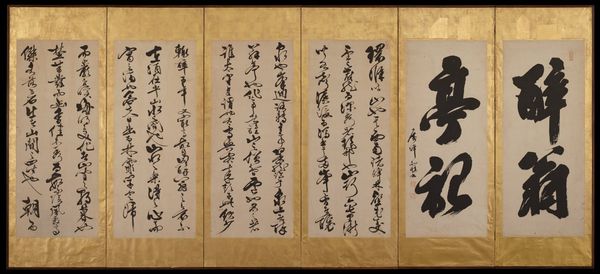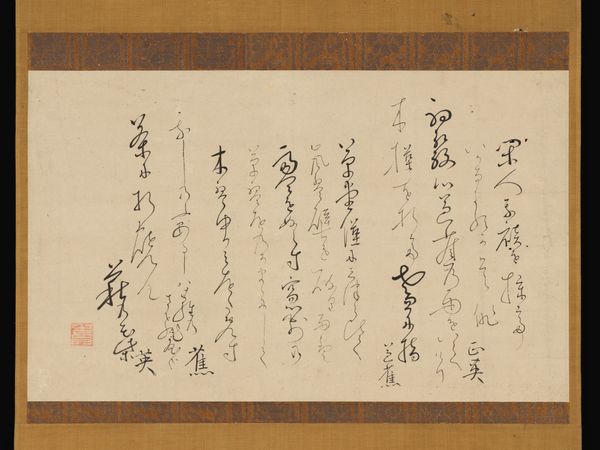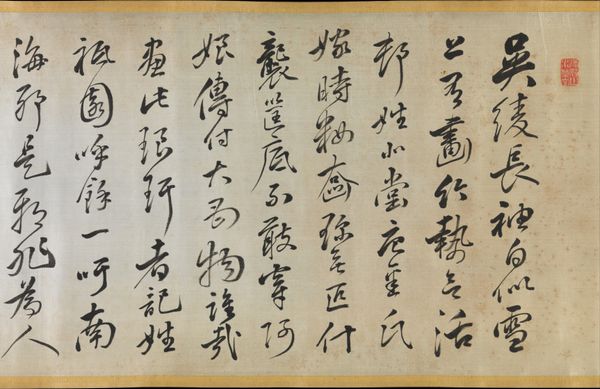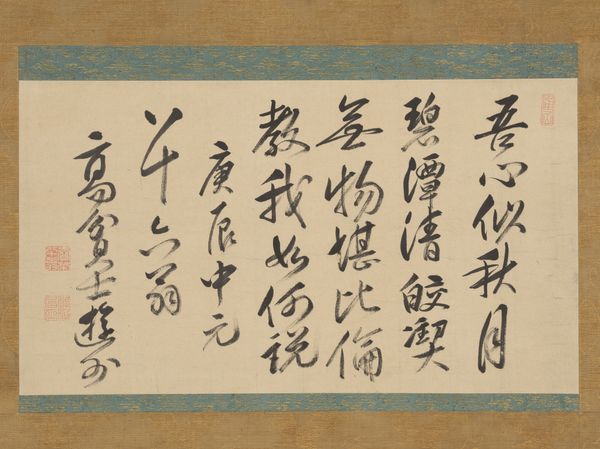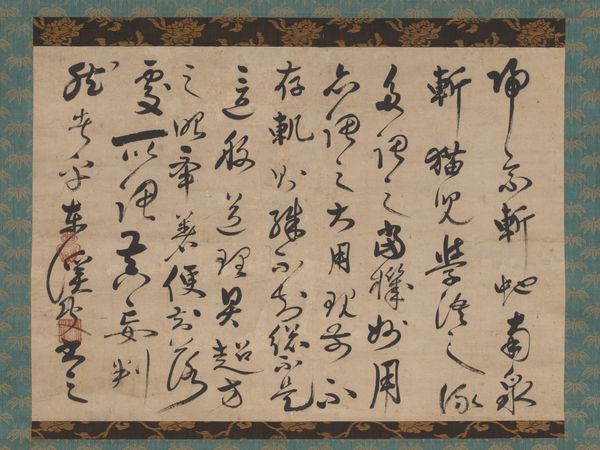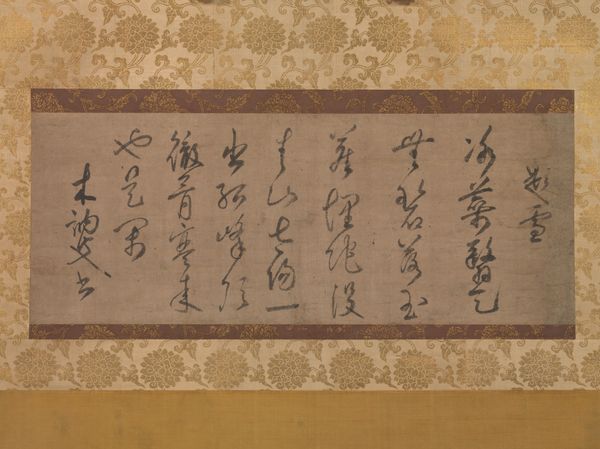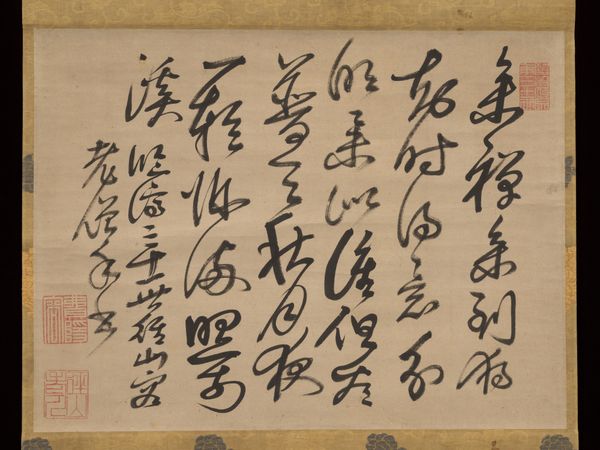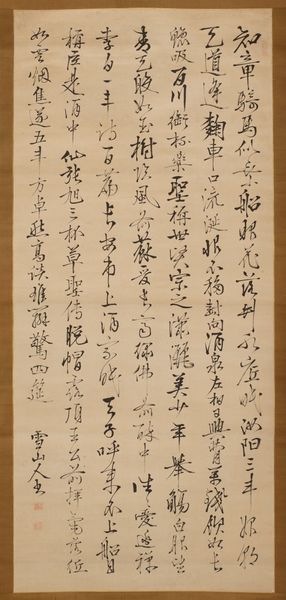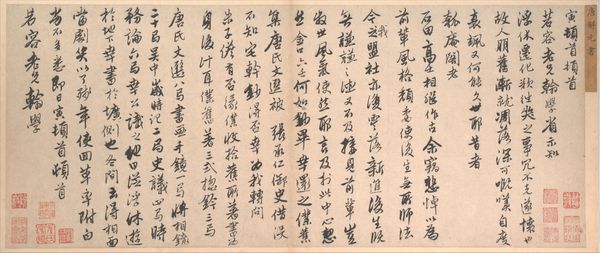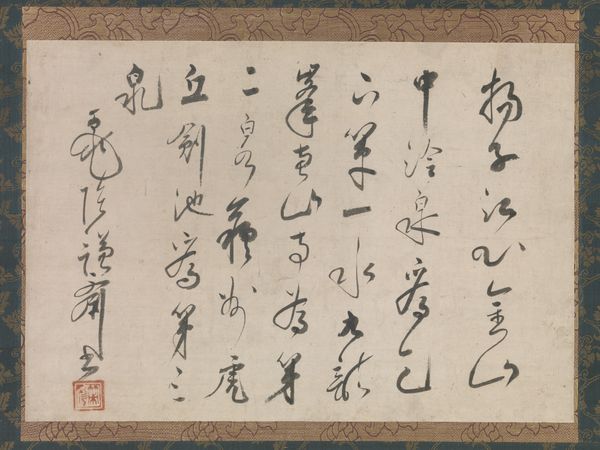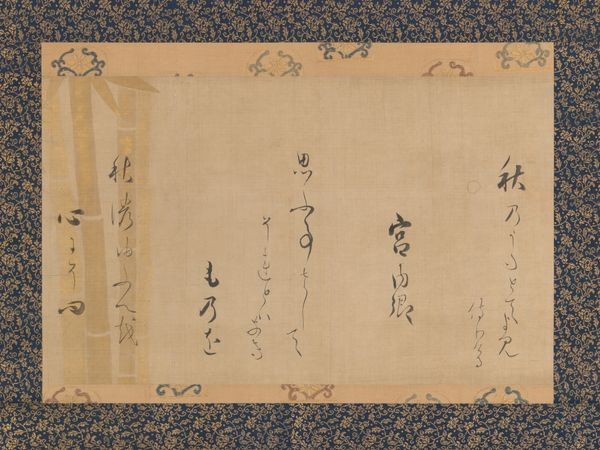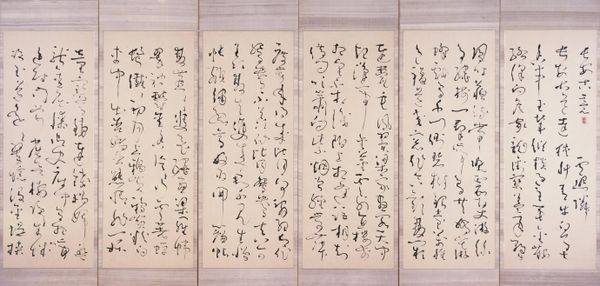![Account of the Pavillion of an Old Drunkard [left of a pair] by Hosoi Kōtaku](/_next/image?url=https%3A%2F%2Fd2w8kbdekdi1gv.cloudfront.net%2FeyJidWNrZXQiOiAiYXJ0ZXJhLWltYWdlcy1idWNrZXQiLCAia2V5IjogImFydHdvcmtzLzYzZTRiNzUwLTU4ZTktNDE1YS1hMTFiLWJkMTQwZjEyYzQ5ZC82M2U0Yjc1MC01OGU5LTQxNWEtYTExYi1iZDE0MGYxMmM0OWRfZnVsbC5qcGciLCAiZWRpdHMiOiB7InJlc2l6ZSI6IHsid2lkdGgiOiAxOTIwLCAiaGVpZ2h0IjogMTkyMCwgImZpdCI6ICJpbnNpZGUifX19&w=3840&q=75)
Account of the Pavillion of an Old Drunkard [left of a pair] 1729
0:00
0:00
paper, ink-on-paper, ink
#
pen drawing
#
asian-art
#
paper
#
ink-on-paper
#
ink
#
calligraphy
Dimensions: 66 1/4 × 147 in. (168.28 × 373.38 cm)
Copyright: Public Domain
This six-panel screen, attributed to Hosoi Kōtaku, showcases elegant calligraphy on a radiant gold background. But what do these brushstrokes reveal beyond their aesthetic beauty? The characters themselves are potent symbols, evoking a tradition where writing is not merely communication but a profound art form. Calligraphy, deeply rooted in Zen Buddhism and Chinese culture, represents a quest for enlightenment and harmony. Like the serpent in antiquity, here the characters transform and shed their meaning over time. Consider the act of writing itself – the focused breath, the measured hand, the ink's dance on paper. This is an ancient ritual, akin to incantation, where words become imbued with power and meaning, not unlike the emblems and gestures found in pagan rites. Through this screen, the past speaks to us, inviting us to contemplate the cyclical nature of symbols and their enduring impact on our collective psyche. It is a reminder that meaning is never fixed but always evolving, resurfacing in unexpected forms across time.
Comments
minneapolisinstituteofart almost 2 years ago
⋮
Kōtaku was most responsible for the spread of karayō (Chinese-style) calligraphy also by publishing instructive guidebooks. The Chinese statesman, calligrapher, and poet Ouyang Xiu (1007–1072) wrote the story of the Old Drunkard's Pavilion in 1046."Chu has mountains all around it, but the forests and valleys in the southwestern range are particularly attractive. There is one that even from a distance appears to be the most lush and elegant; that is Langye Mountain. If you walk a few miles into its hills, you gradually become aware of the sound of gurgling water flowing out from between two peaks; this is Wine-Brewing Brook. The road winds past veering heights, and soon you come to a pavilion that spreads out beside the spring: this is Old Drunkard’s Pavilion. Who was it that built this pavilion' A monk of the mountains, Zhi Xian. Who named it' The Governor, who named it after himself. The Governor and his friends go there often to drink. The Governor gets drunk on even a small amount of wine, and he is also the oldest in the group; that is why he calls himself the Old Drunkard. However, the Old Drunkard’s real interest is not the wine but the mountains and streams. Having caught the joys of the mountains and streams in his hear, he lodges them in wine. When the sun rises, the forest mists vanish; these alternations of light and darkness mark the mountains’ dawns and dusks. As the wild flowers blossom they send forth subtle fragrance, as tall trees bloom they yield deep shade; then the winds and frost are lofty and pure, the rivers dry up and their stones are exposed; these are the four seasons in the mountains. If one spends the day walking in the mountains, one finds that the scenery changes with each season, and the pleasure it provides likewise has no end.Men carrying heavy loads sing in the valleys, travelers rest under the trees, those in front call out, and those behind yell back. From old men with crooked backs to children led by the hand—people pass back and forth continuously; those are the nat
Join the conversation
Join millions of artists and users on Artera today and experience the ultimate creative platform.
